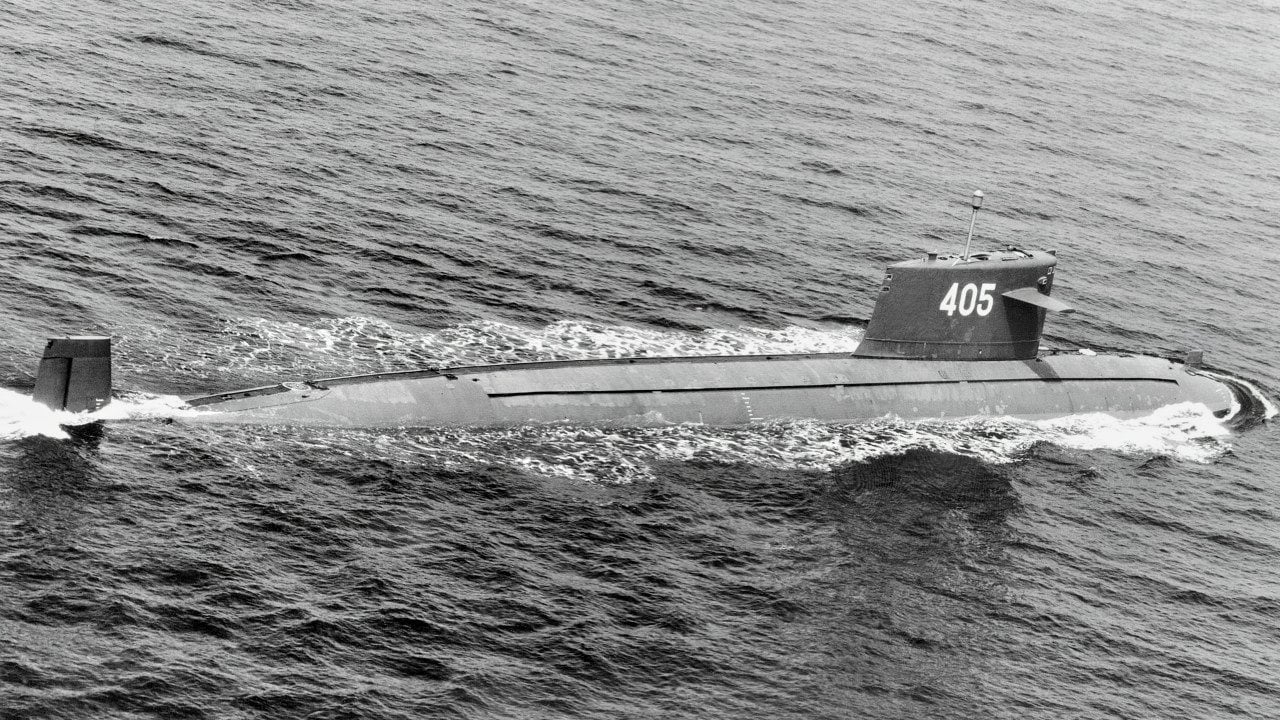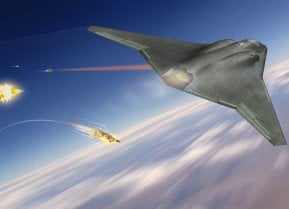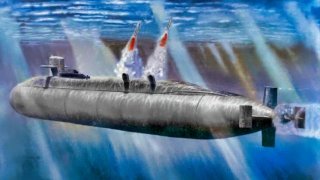China’s Nuclear Submarine Threat is Real
China's rapid military modernization includes a significant nuclear submarine program, aiming to counter the U.S. and its allies in the Indo-Pacific. Historically, China's nuclear subs were considered inferior; however, Beijing's fleet is now catching up, with plans for 21 new submarines by 2030.
What You Need to Know: China's rapid military modernization includes a significant nuclear submarine program, aiming to counter the U.S. and its allies in the Indo-Pacific. Historically, China's nuclear subs were considered inferior; however, Beijing's fleet is now catching up, with plans for 21 new submarines by 2030.

-Given America's global focus and limited shipbuilding capacity, China’s regional advantage in the Indo-Pacific is growing.
-As China builds a technically advanced, numerically superior fleet, the U.S. must urgently expand its own submarine force and modernize shipyards to compete. Failure to respond risks allowing China to dominate the Indo-Pacific and challenge American global influence.
China’s Growing Nuclear Submarine Fleet Threatens U.S. Naval Dominance
China’s military is undergoing a breakneck modernization campaign. This is not just your ordinary small-time power trying to make it big (of course, that’s part of it). Indeed, China is historically a great power—some historical experts claim it was the greatest. So, it’s natural that they would want a military to match their national mythos. But the modernization is greater than just restoration. It’s about revanchism.
Every aspect of China’s new and increasingly potent military is predicated upon beating the Americans and overcoming the militaries of their allies in the Indo-Pacific (particularly countries like Taiwan and Japan).
Beijing is now building increasingly sophisticated aircraft carriers that may or may not prove decisive in any engagement against the Americans. They’ve arrayed a killer network of anti-access/area-denial (A2/AD) capabilities across the Indo-Pacific (specifically in places like the hotly contested South China Sea and along their coastline with Taiwan).
Now, China is reportedly beefing up their nuclear submarine force, which until recently was viewed with derision in Western defense circles.
Decline is Over for China
But the dog days of decline for China might be over. Their submarines are getting more advanced and are growing in number. With China’s massive industrial advantages over the United States, coupled with their very high-skilled workforce, the Chinese military will be able to enjoy numerical superiority over the Americans in terms of nuclear submarines as well as technical parity (or possibly even superiority, depending on how things develop in the United States over the next decade).
Historically, China’s nuclear submarines were a joke. The Type 091 nuclear submarines were an undersea disaster. They were inefficient and loud. Sonar operators in foreign fleets knew when a Chinese submarine was nearby. That’s the death knell for a submarine that is supposed to be stealthy. Even today, China is still using upgraded Type 091 submarines in their fleet. Although, these are slowly being phased out.

The Chinese government has announced its intention to build 21 new nuclear submarines by 2030. Given the fact that China’s strategic focus is on dominating their near-abroad while America’s focus is global, the Chinese People’s Liberation Army Navy (PLAN) has considerable advantages over their American rivals.
As for the technical specifications of China’s nuclear submarine force. Well, Benjamin Brimelow of Business Insider assessed that, “China has built upon decades of earlier failures to field a growing submarine force whose boats are more capable against the US’s advanced subs in a sign that China believes its ambitions may come down to an undersea fleet that can sink rivals and deter enemies from nuclear attack.”
And that’s key.
A Productivity Race
Because, while America’s submarines are still in many ways superior to China’s (notably in terms of seamanship), the fact remains that quantity has a quality of its own. And now that China’s nuclear submarines are reaching technical parity with America’s, at a time when the United States’ defense industrial base—notably its ailing shipyards—cannot meet current demand (let alone the demand of wartime), then you know fully that China’s nuclear submarine force is already a serious threat.
Over time, unless radical changes are made to America’s industrial capabilities, then the Chinese will completely surpass the US submarine force in terms of quantity and quality.
At that point, the United States will be boxed out of the Indo-Pacific entirely and the Chinese will become the new regional hegemon, on their way to becoming the next global superpower, as per the dictates of China’s President Xi Jinping and his “China Dream.” For the record, the “China Dream” as articulated by President Xi is to see the People’s Republic of China replace the United States as the world’s superpower by the hundredth-year anniversary of the founding of the People’s Republic of China by Mao in 1949.
A Real Priority
The priority for the Trump administration when it comes to the US Navy must be twofold. First, it must concentrate on building more submarines. Second, as part of that new submarine building program US Navy shipyards must undergo the most radical modernization program since the Second World War.
And this must happen in an expedited manner. America was once the “arsenal of democracy.” It can be that once again. But it cannot achieve this lofty goal by doing that which has always been done for the last 30 years.
About the Author
Brandon J. Weichert, a National Interest national security analyst, is a former Congressional staffer and geopolitical analyst who is a contributor at The Washington Times, the Asia Times, and The-Pipeline. He is the author of Winning Space: How America Remains a Superpower, Biohacked: China’s Race to Control Life, and The Shadow War: Iran’s Quest for Supremacy. His next book, A Disaster of Our Own Making: How the West Lost Ukraine, is available for purchase wherever books are sold. Weichert can be followed via Twitter @WeTheBrandon.


